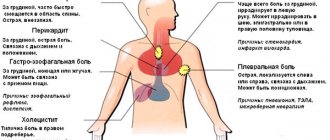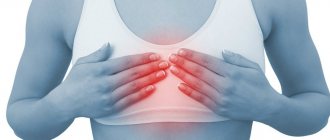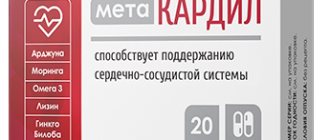Ear pain is a phenomenon that many people of different ages have experienced. Ear pain is accompanied by discomfort, strong, constant, unpleasant, exhausting sensations, and has a negative impact on sleep patterns and quality of life. For this reason, the question of how to get rid of it comes to the fore.
Practice shows that people experiencing ear pain make many mistakes, which increases the likelihood of complications and negative consequences. In such cases, an ENT doctor is needed. The specialist will conduct a diagnosis and prescribe a course of treatment appropriate for the specific case.
To do this, you can contact our clinic and receive high-quality medical services. Our prices for paid medical services are the most affordable in Rostov-on-Don, and the otolaryngologist provides consultations for both adults and children.
Briefly about the ear
Forming an idea of the structure of the ear allows you to understand in which parts pain may occur and what causes it. The organ is one of the most complex in the human body; it consists of three sections:
- Outer ear. This area includes what is accessible for visual inspection without the use of additional devices. We are talking about the concha and the visible part of the ear canal;
- Middle ear. This part is hidden from view and includes the tympanic cavity and the auditory ossicles. Protection of this section is provided by the temporal bone;
- Inner ear. This is the most complex section; its components are represented by bone canals. Its task is to convert incoming sounds into impulses that are transmitted to the brain and recognized there. Also, this department includes the vestibular apparatus, which is responsible for human coordination and balance.
Ear pain: causes
Ear diseases are a common problem that many people experience, regardless of age. Such pathologies can be caused by a large number of reasons. Each disease requires a different approach to treat. For this reason, there is a danger in self-diagnosis of the disease and treatment. If you experience ear pain, the first thing to do is consult a doctor.
Pain in the outer ear
Practice shows that the main cause of diseases in this department is infections. The outer ear is not protected, so the risk of microorganisms entering is high. But even taking into account this fact, the immune system copes with its functions and neutralizes the threat.
Another reason could be injury. Improper cleaning of the ears, blows and injuries provoke the occurrence and spread of the inflammatory process.
Among the symptoms of damage to the external part are:
- Itching in the ear;
- Acute pain in the ear;
- Movement of the jaws is accompanied by increased pain;
- Impact on the sink leads to increased discomfort.
Also, pain in the outer ear can be caused by the following diseases:
- Otitis externa. The cause is bacteria;
- Furuncle (ulcer);
- Injuries. The result of various injuries. Very often, pain in a child’s ear can be caused by foreign objects that children manage to insert into their ears.
It is important to pay attention to the fact that pain in the outer ear may indicate the presence of cerumen, a tumor, or a foreign object. In some cases, such symptoms are characteristic of eczema.
Middle ear pain
This department directly interacts with the outer ear and nasopharynx. For this reason, the disease can be transmitted to the middle ear. Pathological processes developing in the middle ear have a negative impact on the condition and functioning of other organs and tissues.
Among the symptoms indicating the presence of pathology in the middle ear are:
- Shooting pain in ear;
- Sensation of pulsating in the ear;
- Hearing problems in the affected ear;
- Distortion of the perception of one's own voice.
Pain in the ear in this area may indicate that the following pathologies are highly likely to develop:
- Acute inflammatory processes in the middle ear;
- Tumors in the area of the tympanic cavity;
- Trauma and disruption of the integrity of the eardrum;
- Problems with the functioning of the auditory tube.
In some cases, severe ear pain may occur after going to the pool. The pain spreads both to the outer ear, where the infection could have entered, and to the middle ear, where the pain is caused by strong water pressure when diving to depth.
Problems in the inner ear
In most cases, damage to the inner ear is not accompanied by pain. This significantly complicates the detection of pathologies.
Symptoms of internal disease include:
- Problems with coordination arise;
- Difficulty maintaining balance;
- Nausea;
- Extraneous or uncharacteristic sounds in the ears;
- Headaches on a regular basis;
- Progressive hearing loss;
- Dizziness.
The list of common inner ear diseases includes:
- Labyrinthitis (infectious and inflammatory process);
- Hearing loss (impaired functioning of the apparatus responsible for the perception of sound waves);
- Meniere's disease (increased pressure in the labyrinth caused by an increase in labyrinthine fluid);
- Otosclerosis (pathological bone growth).
It is important to note that all of the above reasons are relevant for all ages.
Ear pain causes not related to the ears
In some cases, acute pain in the ear can occur without pathological processes in the auditory organs. Pain can be caused by diseases occurring in neighboring organs.
Among such processes occurring in neighboring organs are:
- Dental problems;
- Trigeminal neuralgia;
- Inflammation of ENT organs;
- Tumors of the larynx, oral cavity, lower pharyngeal region;
- Inflammation in distant organs
- Diseases of the esophagus;
- Pathologies of the heart and blood vessels (heart attack);
- Degenerative pathologies of the cervical vertebrae.
The most optimal solution when you experience ear pain is if you are seen by a paid therapist (Rostov-on-Don) and excludes those diseases that cannot be treated by an ENT doctor, or, on the contrary, refers you to the right specialist in a timely manner.
We must not forget that only a doctor can correctly diagnose and, based on the anamnesis, as well as test results, make a diagnosis and begin treatment.
Therapy methods
Having found out why the patient has pressure on his ears, the doctor develops a treatment regimen.
It all depends on the true causes of the pathological process. For high blood pressure, which can cause severe headaches and stuffy ears, Captopril helps. Nootropic drugs are also used that strengthen the walls of blood vessels and normalize blood circulation: Vertizin, Disiron. Osteochondrosis requires complex treatment using ointments and creams (Diclac gel, Clodifen, Diclofenac), anti-inflammatory drugs, Noofen, which improves cerebral circulation, drugs that strengthen blood vessels, for example, Ginkgo Biloba. When the cause of the malaise is sinusitis, the patient is prescribed a procedure for clearing the nasal passages of accumulated pus, which is called “cuckoo”. In severe cases, the nasal septum is punctured or a Yamik catheter is inserted. In addition to treatment, antibacterial drugs are prescribed, for example, Zinnat, Amoxil, vasodilating drops, and herbal medicines.
Purulent otitis media is treated with antibiotics for both internal and external use. The patient drinks pills, drips medicine into his ears, and takes vitamins. In case of atherosclerotic changes, thinning medications (Aspirin) are prescribed, as well as drugs that reduce the risk of blood clots (Wobenzym). Migraine attacks cannot be cured, but they can be controlled with painkillers. It is important to take the pill at the very beginning of the headache, otherwise it will not help the patient.
Types of ear pain
Pain in the ears can manifest itself in different ways. The specificity of pain acts as one of the guidelines in determining pathology.
Nature and intensity of ear pain:
- Sudden pain. Accompanied by acute pain, it can be caused by injury or a foreign object;
- Progressive pain. It occurs against the background of pathologies with moderate dynamics of development. May indicate wax plug, inflammation in the ear canal;
- Severe pain in the ear, accompanied by throbbing. Character for boil, OVSU, injury;
- Stitching, sharp. The pain occurs periodically, bringing with it discomfort. The main reason is neuralgia;
- Blunt pain. Manifests against the background of diffuse otitis, may indicate the presence of sulfur plugs, inflammation of the middle section in a chronic form;
- Itchy pain. Relevant for those cases when we are talking about damage to the external part. May be caused by otitis media, disruption of the integrity of the ear canal, eczema;
- Intermittent. This kind of sensation is characteristic of radiating pain;
- When swallowing. Causes: OVSU, malignant tumors of the oral cavity and larynx, pharyngitis, tonsillitis.
What is “possible” and what is absolutely “not” for ear pain
If a child has ear pain, it is recommended to visit a doctor as an emergency. If you need an ENT doctor, you can make an appointment with him in our clinic.
How to reduce pain?
Folk remedies:
- Ammonia with camphor. The solutions are mixed. Gauze is dipped in the solution and placed in the ear for a few minutes, this allows you to get rid of pain;
- Decoction based on onions. Another way to get rid of pain. A warm decoction is used to wipe the auricle and ear canal. The result is a disinfecting effect and pain reduction.
An alternative option is to take a pain reliever. In some cases, the use of vasoconstrictor drops is allowed.
What not to do?
- Warm up the ear. This action may spread the infection;
- Taking antibiotics. This approach is ineffective and can cause damage to nerve endings;
- Use of medications “as advised.” The use of drops is prescribed only by a doctor based on examination and test data. Only a doctor will help resolve the issue of prescribing the optimal course of treatment for a child and an adult, taking into account the specifics of the clinical picture.
- “Folk” methods of a radical nature.
Our Heratsi Medical Center employs only experienced doctors with high professional training. We have high-precision equipment: an expert-class ultrasound machine, our own laboratory for working with analyses.
The cost of all services of the medical center can be viewed in the “Price” section or by calling the 24-hour hotline.
Diagnostic methods
When visiting a doctor, the patient must describe his symptoms in detail. This will narrow down the search for a possible disease. To make a diagnosis, laboratory and instrumental tests are prescribed, with the help of which the condition of the body is assessed, inflammatory processes, infections, metabolic disorders and other problems are identified.
If there is pressure on the ears and other symptoms bother you, the root cause can be determined using:
- What to do if you have a blown ear: symptoms and treatment at home
- ultrasound examination of the vessels of the cervical spine to determine the presence of circulatory disorders in the brain,
- biochemical blood test to determine cholesterol levels,
- magnetic resonance imaging,
- blood pressure monitoring,
- measuring intracranial pressure,
- x-ray of the spine,
- computed tomography with contrast agent to check the condition of the brain vessels.
After receiving the results of these procedures, the specialist can prescribe a course of treatment taking into account the individual characteristics of the patient’s body.








